Find the elastic potential energy stored in each spring shown in figure, when the block is in equilibrium. Also find the time period of vertical oscillation of the block.
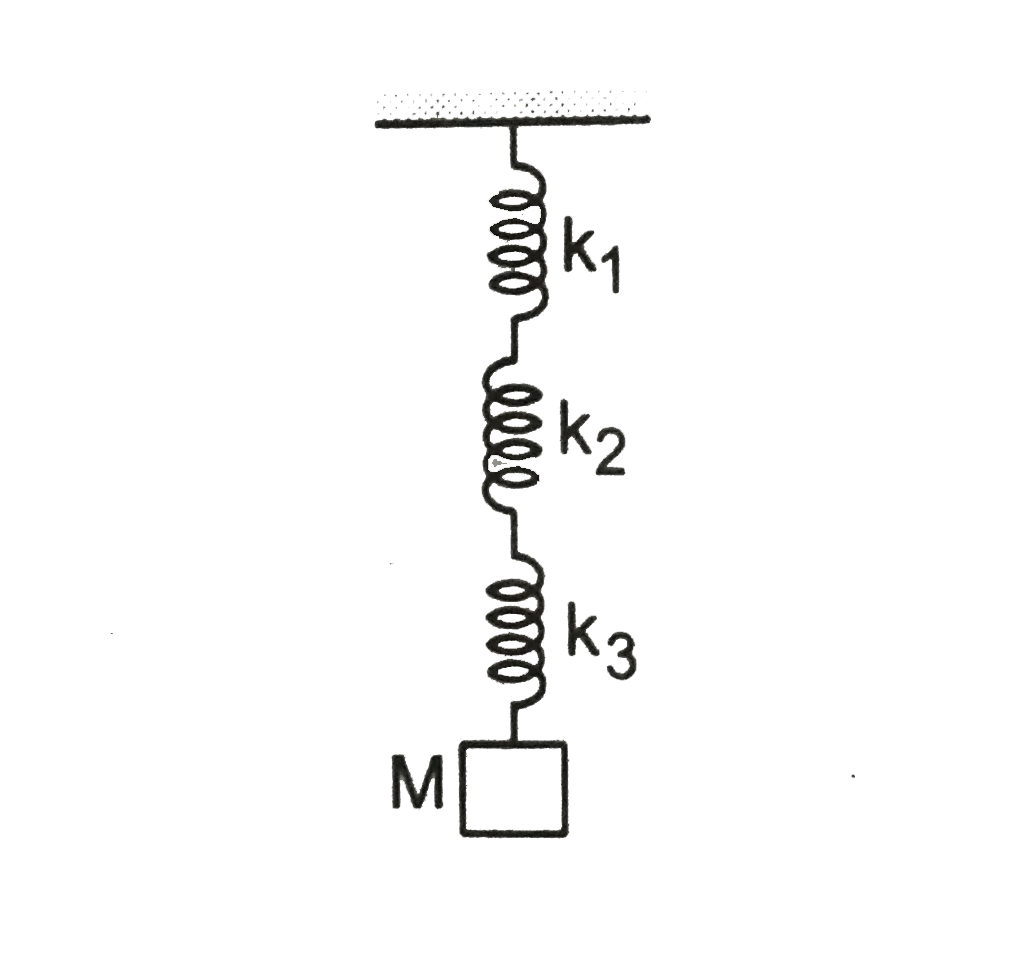
The correct Answer is:=2π√M(1k1+1k2+1k3)
PE1=m2g22k1
PE2=m2g22k2
PE3=m2g22k3
k1,k2,k3 are in series
=1k=1k1+1k2+1k3
→K=k1k2k3k1k2+k2k3+k3k1
time period
T=2π√mk
=2π√M(1k1+1k2+1k3)
Now force =weight =mg
:. At k1 spring
x1=mgk1
similarly x2=mgk2
and x3=mgk3
∴PE1=12k1x21
=12k1(MgK1)2
=12k1m2g2k21
=12m2g2k1=m2g22k1
similarly PE2=m2g22k2
and PE3=m2g22k3
Topper's Solved these Questions
- SIMPLE HARMONIC MOTIONBOOK - HC VERMACHAPTER - SIMPLE HARMONIC MOTIONEXERCISE - Objective-2
2 Videos
- ROTATIONAL MECHANICSBOOK - HC VERMACHAPTER - ROTATIONAL MECHANICSEXERCISE - Exercises
86 Videos
- SOME MECHANICAL PROPERTIES OF MATTERBOOK - HC VERMACHAPTER - SOME MECHANICAL PROPERTIES OF MATTEREXERCISE - Exercises
32 Videos
Similar Questions
Spring mass system is shown in figure. Find the elastic potential energy stored in each spring when block is at its mean position. Also find the time period of vertical oscillations. The system is in vertical plane.
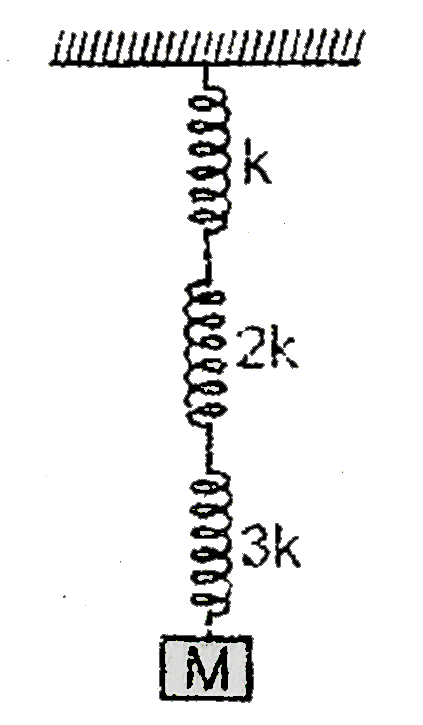
View SolutionSpring mass system is shown in figure. Find the elastic potential energy stored in each spring when block is at its mean position. Also find the time period of vertical oscillations. The system is in vertical plane.

View Solution
Knowledge Check
A system is shown in the figure. The force The time period for small oscilations of the two blocks will be
 A2π√3mKB2π√3m2KC2π√3m4KD2π√3m8K
A2π√3mKB2π√3m2KC2π√3m4KD2π√3m8K
The time period of oscillation of the block as shown in figure is

View SolutionFind the maximum energy stored in the spring shown in figure, for which the block remains stationary on the rough horizontal surface.
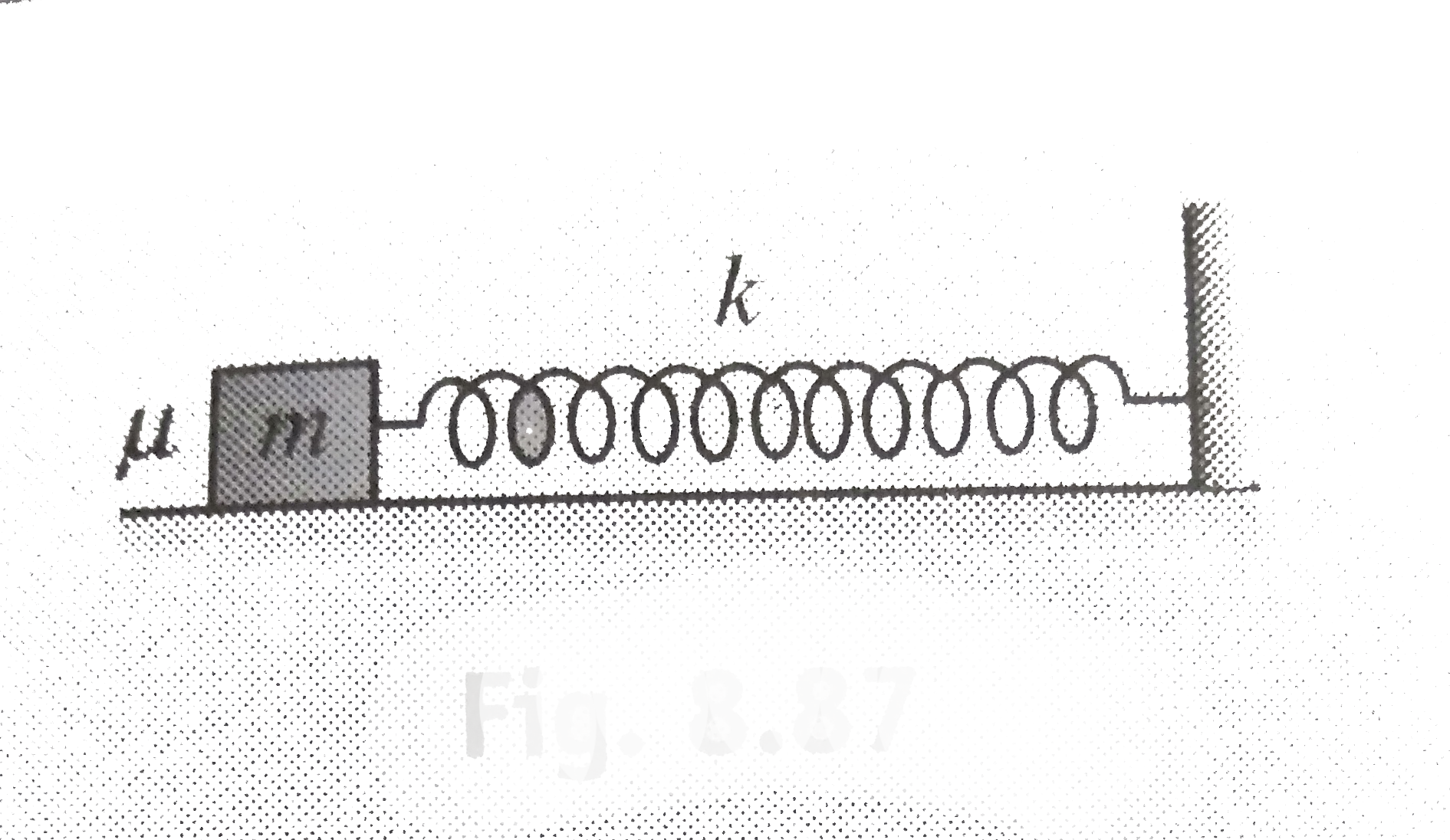
View SolutionA block is placed on a rough horizontal plane. Three horizontalforces are applied on the block as shown in the figure. If the block is in equilibrium, find the friction force acting on the block.
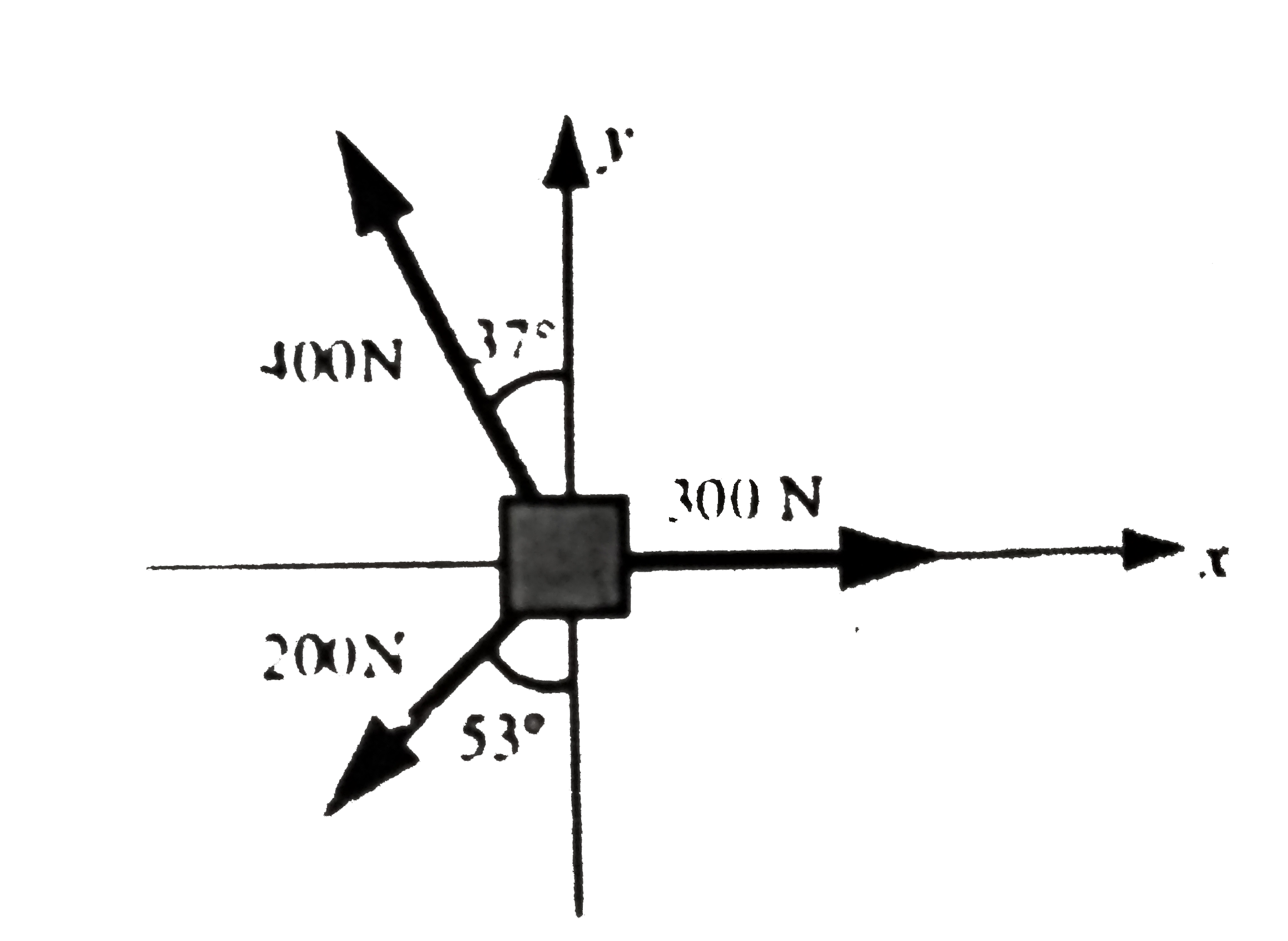
View SolutionTime period of vertical oscillation of the block in the system in the figure is
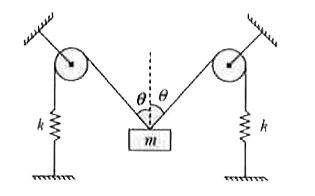
View SolutionIn figure, k=100N/m,M=1kg and F=10N
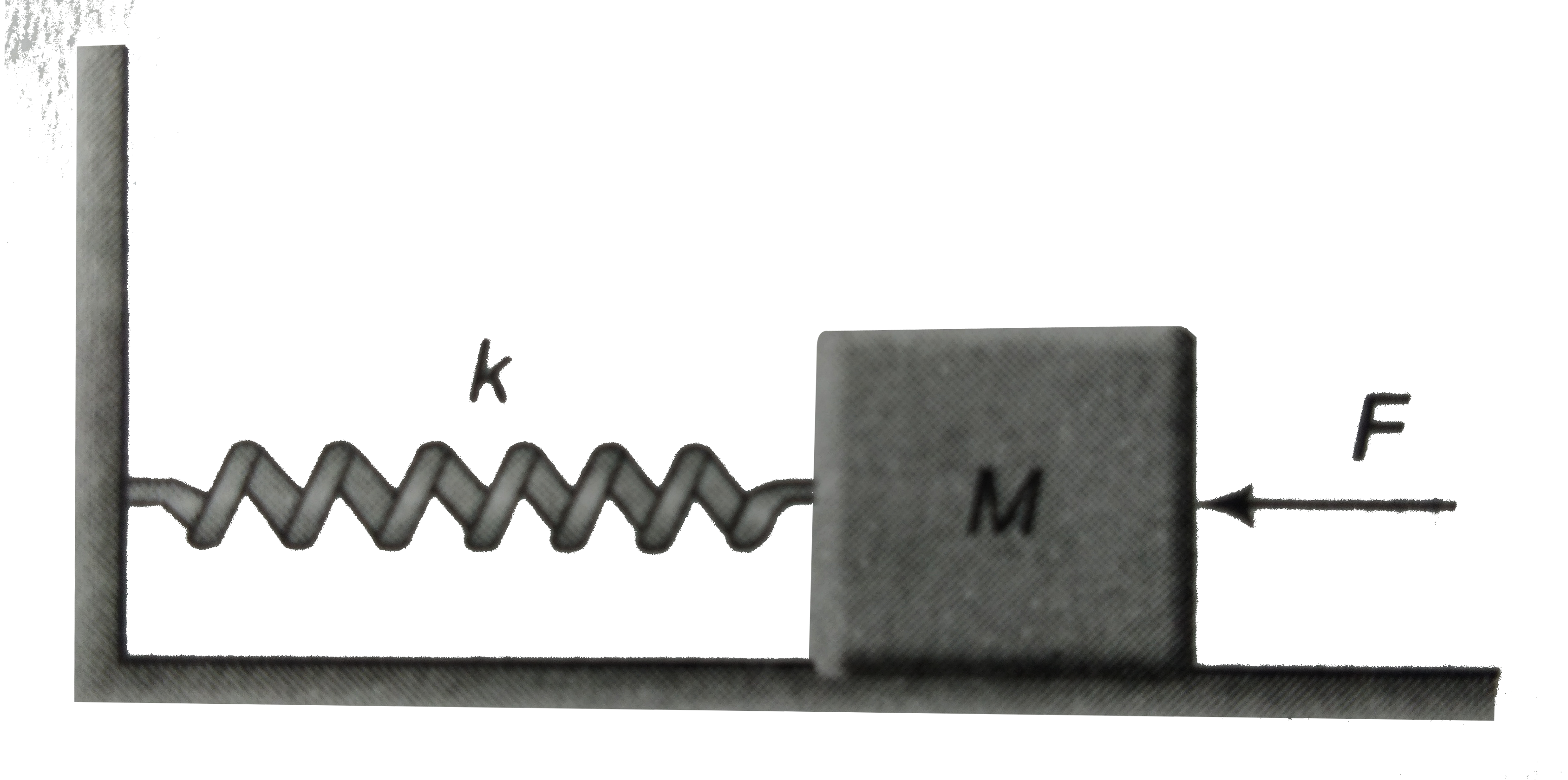
(a) Find the compression of the spring in the equilibrium position
(b) A sharp blow by some external agent imparts a speed of 2m/s to the block towards left. Find the sum of the potential energy of the spring and the kinetic energy of the block at this instant.
(c) Find the time period of the resulting simple harmonic motion.
(d) Find the amplitude.
(e) Write the potential energy of the spring when the block is at the left estreme.
(f) Write the potential energy of the spring when the block is at the right extreme.
The answers of (b), (e) and (f) are different. Explain why this does not violate the principle of conservation of energy ?
View SolutionIn figue k=100Nm−1M=1kgandF=10N. a. Find the compression of the spring in the equilibrium position. b. A sharp blow by some xternal agent imparts a speed of 2ms−1 to the block towards left. Find the sum of the potential energy of the spring and the kinetic energy of the block at ths instant. c. find the time period of the resulting simple harmonic motion. d. Find the ampitude. e. Write the potential energy of the spring when the block is at the left extreme. f. Write teh potential energy of the spring when teh block is at the right extreme.
The anwer of b, e, and f are different. Explain why this does not violate the principle of conservation of energy.

View Solution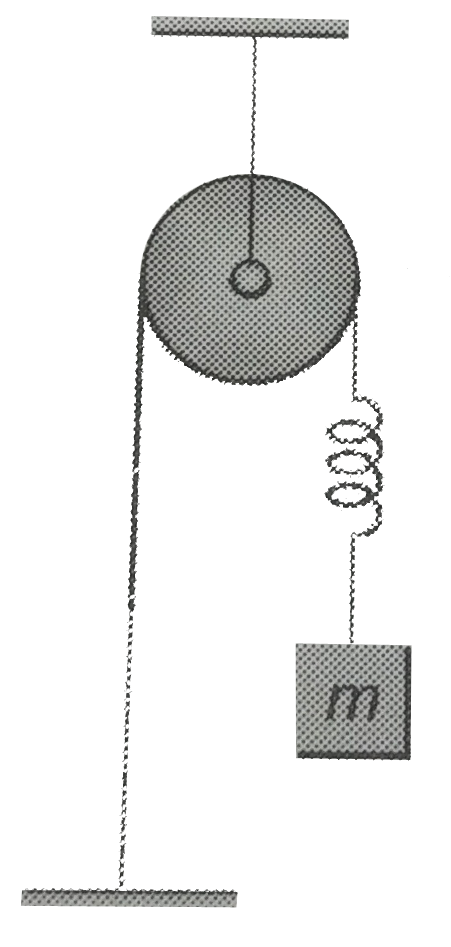
Consider the situation as shown. Initially the spring is unstretched when the block of mass m is released from rest assuming the pulley frictionless and light the spring and string massless. Find the extension of sprinig when the block is in equilibrium also find the maximum extension of the spring.
View Solution
